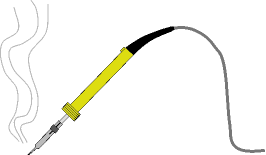Home |
Map |
Projects |
Construction |
Soldering |
Study |
Components |
555 |
Symbols |
FAQ |
Links

Starter kit of components
Also see: Tools for electronics | Making a workbench
 If you are new to electronics and would like to try adapting published projects,
or designing and building your own circuits, you need to have a small stock of
components available. However, there is a very wide range of components and it
can be difficult to know which ones you really need! I hope the list below will
help you choose a sensible selection which is within your budget. Remember that
circuits built on breadboard can be dismantled after use and the components re-used.
If you are new to electronics and would like to try adapting published projects,
or designing and building your own circuits, you need to have a small stock of
components available. However, there is a very wide range of components and it
can be difficult to know which ones you really need! I hope the list below will
help you choose a sensible selection which is within your budget. Remember that
circuits built on breadboard can be dismantled after use and the components re-used.
It is usually cheapest to buy components by mail order and several suppliers are
listed on the Links page. Send for a catalogue first,
even if you have to pay for it, because most include a great deal of useful
information as well as listing part numbers and prices. Kits of assorted components
may be available and this is a great way to start if you can afford the initial cost.
Remember that you will need to organise storage of the components!
Rapid Electronics
stock a wide range of components and they have kindly allowed me to use their
photographs on this page.
Essential components
These are the components used in most projects. The individual components are
quite cheap, but the total cost of the set will be significant! One way to spread
the cost is to add a few items from this list every time you buy the components for
a particular project. Click on the titles for further information.
 0.25W carbon film resistors are the cheapest type.
Choose ones with 4-band colour codes because these are easier to read
(the precision of 5-band codes is unnecessary).
0.25W carbon film resistors are the cheapest type.
Choose ones with 4-band colour codes because these are easier to read
(the precision of 5-band codes is unnecessary).
Ideally you need a good selection of values over the range
100 to
1M
to
1M such as the E6 or E12 series,
but that is a large number of resistors!
As a minimum I suggest: 470*, 1k*, 2k2, 4k7, 10k*, 22k, 33k, 47k, 100k, 220k, 470k
and 1M
such as the E6 or E12 series,
but that is a large number of resistors!
As a minimum I suggest: 470*, 1k*, 2k2, 4k7, 10k*, 22k, 33k, 47k, 100k, 220k, 470k
and 1M .
Buy at least 10 of each value and 20 of those marked *.
The 470
.
Buy at least 10 of each value and 20 of those marked *.
The 470 resistors are for use with LEDs, even if a project specifies a slightly different value.
resistors are for use with LEDs, even if a project specifies a slightly different value.
Resistors may be combined in series and parallel
to obtain extra values,
for example 100k and
220k
and
220k in series is
320k
in series is
320k which is close
enough to 330k
which is close
enough to 330k .
.
Low values: 0.01µF and 0.1µF metallised polyester, 10 of each.
High values: 1µF 63V, 10µF 25V, and 100µF 25V electrolytic with radial leads,
10 of each; 220µF 25V and 470µF 25V electrolytic with axial leads, 3 of each.
 1N4148 signal diode and 1N4001 rectifier diode, 5 of each.
1N4148 signal diode and 1N4001 rectifier diode, 5 of each.
 Red, yellow and green 5mm standard LEDs, 10 of each.
Red, yellow and green 5mm standard LEDs, 10 of each.
 About 5 general purpose, low power, NPN transistors. These should have a maximum collector current
(Ic max) of 100mA, and a minimum current gain (hFE min) of 200.
About 5 general purpose, low power, NPN transistors. These should have a maximum collector current
(Ic max) of 100mA, and a minimum current gain (hFE min) of 200.
For example: BC548B (BC108 equivalent).
About 5 general purpose, medium power, NPN transistors. These should have a maximum collector current
(Ic max) of 1A, and a minimum current gain (hFE min) of 30.
For example: BC639 (BFY51 equivalent).
NE555 timer IC, at least 3 (10 if you plan to solder projects).
It is not worth ordering other ICs at this stage unless you know
they are needed for some of the projects you wish to try.
If you are planning to solder circuits on stripboard or PCB you will also
need 8-pin, 14-pin and 16-pin DIL sockets (chip holders), at least 10 of each.
Presets are cheaper than standard variable resistors but most have pins which are too
large for breadboards. For breadboard circuits is is probably best to buy standard
variable resistors and solder short single core 1/0.6mm wires onto them.
The useful values are: 10k LIN, 100k LIN and
1M LIN,
buy 2 of each.
A 1M
LIN,
buy 2 of each.
A 1M LOG potentiometer is useful too.
Knobs are optional because it is easy to turn the spindles by hand.
If you buy presets the horizontal style are best, all presets are LIN.
LOG potentiometer is useful too.
Knobs are optional because it is easy to turn the spindles by hand.
If you buy presets the horizontal style are best, all presets are LIN.
Clip for a 9V PP3 battery, buy 3 (or 10 if you plan to solder projects).
Remember to buy a battery too!
Red and black 7/0.2mm stranded wire, one colour of single-core 1/0.6mm wire,
10m (or a reel) of each.
If you are planning to build projects on breadboard buy extra colours of the
single-core wire, including red and black.
Buy at least one standard crocodile clip to use as a heat sink when soldering.
Miniature red and black crocodile clips (buy about 10 of each) are useful for
making your own test leads using 7/0.2mm stranded wire.
Switches are not essential for breadboard circuits because you can make or break
links with pieces of wire. The on/off switch from soldered projects can also be
omitted if you are willing to unclip the battery instead.
If you wish to buy a few switches the most useful types are push-to-make and
miniature SPDT toggle switches, 3 of each.
Buy a large sheet (or two) and cut it up as required.
You can cut it neatly to size using a junior hacksaw, cutting along the lines
of holes is easiest. For quickness you can break it over the edge of a workbench
along the lines of holes - take care though because this needs a fairly large
force and the edges will be rough. You may need to use a large pair of pliers
to nibble away any jagged parts.
Avoid handling stripboard that you are not planning to use immediately because
sweat from your hands will corrode the copper tracks and this will make soldering
difficult unless you clean the board first.
A small breadboard (such as the Protobloc 1 shown in the picture) is suitable for
simple circuits with up to two ICs, but if you intend to build more complex circuits
such as counters it is best to buy a larger breadboard (such as the Protobloc 2).
Breadboards do not require soldering so the components used on them can be re-used
many times. They are ideal for testing your own circuit designs and trying out ideas
such as adapting a published project.
Other components to consider
Buy these if you can afford them, or wait until they are needed for a project.
Storage systems for components
You can store all your components in a single container, such as a plastic food box,
but as you accumulate more items it will become increasingly difficult to find the
smaller components! A cheap solution is to organise the parts into small snap-top
plastic bags which can be labelled, in fact you may find that some components are
supplied like this.
Probably the best storage system is a cabinet of plastic drawers.
These can be expensive, but you do not need many drawers because there is no
need to have a drawer for every single component value.
Many parts can be grouped together, such as decades of resistor values.
For example you could organise a 15-drawer cabinet like this:
- Resistors 10
 +
(third band black) only a few, but they tend to be large
+
(third band black) only a few, but they tend to be large
- Resistors 100
 +
(third band brown)
+
(third band brown)
- Resistors 1k
 +
(third band red)
+
(third band red)
- Resistors 10k
 +
(third band orange)
+
(third band orange)
- Resistors 100k
 +
(third band yellow)
+
(third band yellow)
- Resistors 1M
 +
(third band green) and
10M
+
(third band green) and
10M (third band blue)
(third band blue)
- Presets, also variable resistors if they will fit in the drawer
- Capacitors low values, less than 1µF
- Capacitors electrolytic 1µF+
- Diodes and transistors
- LEDs and lamps (also LED clips and lampholders)
- ICs (chips) and their holders (DIL sockets)
- Switches and relays
- Connectors (crocodile clips, plugs and sockets)
- Other components (battery clips, piezo transducers, LDRs, thermistors)
 Rapid Electronics
stock a wide range of components and they have kindly allowed me to use their photographs
on this page. We buy most of our components and tools for the Electronics Club from
Rapid Electronics. The photographs are from their Image Gallery CD-ROM.
Rapid Electronics
stock a wide range of components and they have kindly allowed me to use their photographs
on this page. We buy most of our components and tools for the Electronics Club from
Rapid Electronics. The photographs are from their Image Gallery CD-ROM.
© VCampus 2013, The Electronics Club,
vcampus.co
 If you are new to electronics and would like to try adapting published projects,
or designing and building your own circuits, you need to have a small stock of
components available. However, there is a very wide range of components and it
can be difficult to know which ones you really need! I hope the list below will
help you choose a sensible selection which is within your budget. Remember that
circuits built on breadboard can be dismantled after use and the components re-used.
If you are new to electronics and would like to try adapting published projects,
or designing and building your own circuits, you need to have a small stock of
components available. However, there is a very wide range of components and it
can be difficult to know which ones you really need! I hope the list below will
help you choose a sensible selection which is within your budget. Remember that
circuits built on breadboard can be dismantled after use and the components re-used.











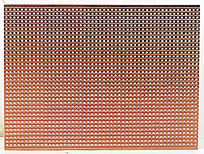
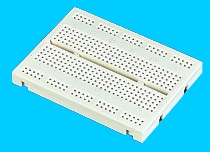
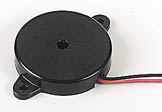

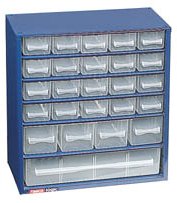
 Rapid Electronics
stock a wide range of components and they have kindly allowed me to use their photographs
on this page. We buy most of our components and tools for the Electronics Club from
Rapid Electronics. The photographs are from their Image Gallery CD-ROM.
Rapid Electronics
stock a wide range of components and they have kindly allowed me to use their photographs
on this page. We buy most of our components and tools for the Electronics Club from
Rapid Electronics. The photographs are from their Image Gallery CD-ROM.
